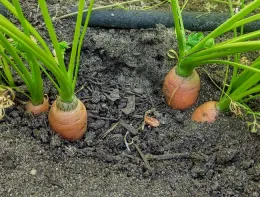
Where to plant
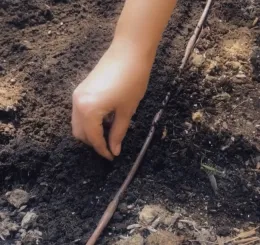
Planting seeds
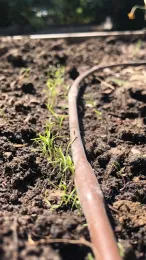
Once the seedlings emerge you will need to thin them. For me this is the hardest part of gardening, removing perfectly good seedlings to give others the chance to grow. But it is especially important with root crops like carrots because leaving too many seedlings causes them to compete for limited nutrients and space and results in a poor crop. So, toughen up, identify the hardiest seedlings, and thin them to a minimum of ¾ inch apart to as much as 2 inches apart depending on anticipated root size. Pulling them can disrupt nearby seedlings so cutting them at ground level can be a better option. If you can't bring yourself to do it, do like I do and pretend the ones you are thinning are weeds. Check back at least weekly and remove any late sprouting seedlings.
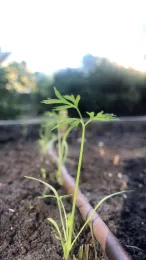
Young seedlings are fragile and should be watered using the mist option on your hose nozzle or with a drip system. Only light watering is needed. Once your plants are past the seedling stage the important growing occurs beneath the soil so make sure the soil is moist throughout the root zone.
Fertilizing
Carrots use a lot of nutrients and can benefit from a light application of fertilizer. Use a fertilizer with a balanced amount of nitrogen (N), phosphorous (P) and potassium (K) such as 5-10-5, 5-10-10 or 12-12-12. Follow manufacturer recommendations on the amount and method to apply as it will vary based on the amount of NPK per pound of product. More fertilizer can be applied while plants are growing, generally starting after plants are 3-4 inches tall. Add to the sides of the row and water in or apply through your drip system. Light application every 3-4 weeks is preferred to one heavy application.
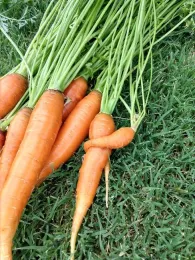
At last, harvest
Most varieties of carrots are ready to harvest 90 days after planting. Harvesting too early yields undersized carrots that may not have the flavor and texture you were hoping for. If left in the ground for too long they will become tough and may crack. Check the root size by digging the soil around the carrot and harvest when they are the size you want.
Read more about carrots in the following UC IPM publication
Cultural Tips for Growing Carrots: https://ipm.ucanr.edu/home-and-landscape/carrot/cultural-tips/index.html?src=307-pageViewHLS

Barbara Kissinger Santos has been a UC Cooperative Extension Master Gardener in Stanislaus County since 2024.

